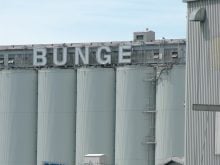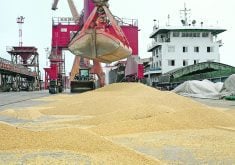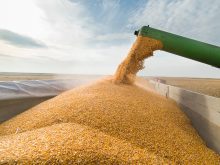Whether the effect of Sept. 11 terrorist attacks and fears of a recession will ruin the beef industry’s recent positive price run remains to be seen.
But there’s no question that the future looks more uncertain than it has for a long time, industry analysts say.
“You have a lot of cross currents going on,” said senior livestock industry analyst Chuck Levitt of Alaron Futures and Options in Chicago.
“You have such a high emotion factor to go along with recessionary tendencies.”
The down side is that there isn’t much reason for producers, especially beef producers, to expect better prices in the coming year, analysts say.
Read Also

Defence investments could benefit agriculture
A bump in Canada’s NATO spending commitments could lead to infrastructure investments that would benefit rural areas
The up side is that meat consumption will continue, if at lower prices, and meat consumption tends to be less affected by bad economic conditions than many other parts of the economy. For pork there may be no effect at all.
However, the terrorist attacks and an apparently oncoming recession are beginning to take a toll on beef demand.
Kevin Grier, a meat industry analyst with the George Morris Centre in Guelph, Ont., said cut-out statistics are already showing a drop in interest for high-price beef cuts, a phenomenon reflecting a sudden slump in activity in some resort and tourist areas.
“In Calgary, food service sales are OK. In Banff, they’re terrible,” said Grier.
Levitt said beef demand was losing some of its momentum before the terrorist attacks.
“We were already starting to see some slippage,” said Levitt. “The demand for beef, while still growing, started growing at a slower pace.”
Levitt said people tend to eat the same amount of meat at home even during a recession. They may switch from expensive cuts to cheaper cuts, though. And they may stop eating out at expensive restaurants.
Sept. 11 exacerbated this tendency.
“You have some people afraid to travel, afraid to go on vacation, afraid to be in public,” said Levitt.
“People tend to not want to spend money at the white tablecloth restaurants. You tend to do that on expense accounts at business meetings.”
A lot of business travel and conventions have been cancelled because of the terrorist attack.
A slump in demand for the expensive cuts reduces the value of each beef carcass. Grier and Levitt said those cuts will still be sold, but at a lower price.
Some spending will not return until consumers feel more secure.
“We don’t know how long it will be before people feel like they’re back in a routine,” said Levitt.
“If we start a shooting war in Afghanistan, and the terrorists come back here or do something here or are successful in some other way, you’re just going to perpetuate the fear factor.”
Analysts expect pork to hold up better than beef.
“I believe pork is relatively immune,” said Grier.
“Over long periods of time the price has been unaffected by economic conditions.”
That’s because pork has a much lower proportion of high-price cuts than beef and because it does better at home than in restaurants.
“People eating less at restaurants and more at home is friendly to pork, and unfriendly to beef,” said University of Missouri meat market analyst Ron Plain.
Chicken may benefit because it tends to be the cheapest meat source in the U.S., so any switch away from beef may go to chicken and pork.
University of Iowa meat industry analyst John Lawrence said he thinks meat demand will suffer because of recession.
But he expects that recession to end in the second or third quarter of 2002, after which demand will recover based on supply and demand conditions.
“Pork and beef demand are a function of consumer spending and thus are expected to be weaker in the year ahead, particularly compared to the tremendous demand we have had over the past two to three years,” said Lawrence.
U.S. pork supplies are expected to be lower than year earlier levels through the first quarter, and prices similar or slightly higher. The second and third quarter supplies should be higher and prices lower.
Beef supplies are expected to be larger than the same quarter of the year before through the second quarter of 2002 and prices are expected to be lower.
By the third quarter, supplies should fall to the same level or lower than the previous year and prices will move to year-over-year higher levels.
Grier cautioned that dramatic events such as Sept. 11 and other major events such as a possible
recession do not dictate meat price and demand levels.
“Good economic times and bad economic times for two decades did not matter much (for beef consumption),” said Grier about the 1980s and 1990s.
“Through good and bad times demand was declining.”
That changed in 1999, when beef demand began growing, a trend that has continued, although weakened recently.
Levitt said there is no chance that short supplies of meat will help strengthen prices.
“We have very large supplies of meat,” said Levitt. Poultry production this winter will probably be a record, and there are a record number of cattle on feed in the U.S. Pork, while slightly off record production, will remain plentiful.
That means demand will drive any good news in the coming months.
Levitt said judging demand is always the most difficult part of a commodity analyst’s job.
“We know plenty about supplies. We can measure that and cut it up and scrutinize it and look at it under a magnifying glass,” said Levitt.
“What we have a really tough time with is understanding how people make decisions when they get to the meat counter or sit down at the restaurant.”















